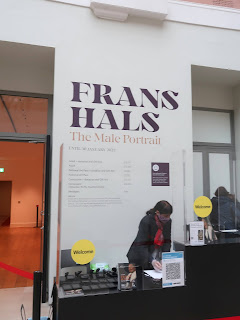18 -Last Friday, more Editing
 |
| An image from Dresden Dynamo |
Last week in the Moving image session we were shown a piece of work that was created in the days of 16mm (this film format is still around but less common these days)the work we saw was 'Dresden Dynamo' by the experimental film maker Lis Rhodes and was made 1971-72.
(More about Liz Rhodes here)
Liz explains the way the Sound track was created and the reason for it's unpredictability and other-worldliness here. The image is read by an optical sound head and this is not the usual way (normally a distinct separate sound track of audio/music would be recorded ) conversely the pattern and shapes in Liz's film correspond with the soundtrack so we see the sound and here the pictures.
We also got a chance to see Berlin Horse by Malcolm Le Grice (with soundtrack by Brian Eno) - we were told that the film was colourised black and white (printed to add colour), the film includes found footage, superimposition and various distortions (including speeding up reversing and use of negative images).
(you can find out more about the film here - and read more about Malcolm who The British Film Institute claims to be ".. probably the most influential modernist filmmaker in British cinema" here.
Dr Pete took us further into editing with the Final Cut program on Apple machines .and I worked on my 'British Library' sequence - here's a clip from what I hope will be part of the final piece..
It was suggested that my edit could allow for some quite 'brutal' reduction and I in fact cut the running time by about half *just around 2 minutes)
Dr Pete Gomes (who looks after the Moving Image option spoke about some of the things that can be done, much of the course can involve shooting and editing we might learn about Split Screen, Stop Animation as wellas performance and the technical wizardry of 'Green Screen'. (sometimes known as Chroma Key) - Food for thought.



Comments
Post a Comment